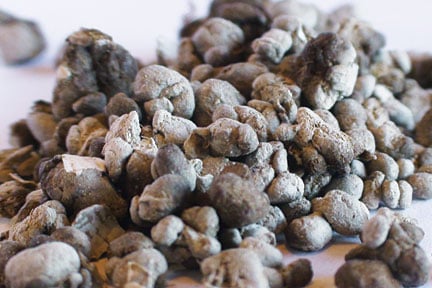Throughout various stages of a gypsum wallboard processing system, drying can be attributed as a leading element in the overall quality of a final gypsum product. Considering that gypsum wallboard sales exceeded $3 billion in 2013 alone, with sales estimates projecting rising demand, it comes as no surprise that every stage of gypsum processing must be efficient in order to ensure consistent product results. Read on to learn the basic steps of gypsum wallboard processing, as well as how the process of drying gypsum ore refines the material and benefits subsequent stages in the overall process.
Basic Steps when Processing Gypsum into Gypsum Wallboard
Gypsum wallboard, commonly referred to as drywall or gypsum board, is a specific building board material containing a gypsum core and paper exterior. While typical gypsum processing produces crude and finished products throughout the various processes, the following outline highlights stages performed during the manufacture of gypsum board:
Pre-Conditioning Gypsum
Gypsum ore is extracted from a quarry or mine and then crushed to a smaller, more manageable size. The material’s moisture content is then assessed before entering a grinding mill. Gypsum ore with greater than 0.5 weight percent moisture is processed using a rotary dryer. Once the moisture content is at the appropriate level, a grinding mill reduces the material into a fine, chalk-like powder commonly known as land plaster. The land plaster is then calcined in large kettle reactors to remove most of the water from the plaster.
Producing Gypsum Board
After pre-conditioning is complete, calcined land plaster, called stucco, is rehydrated with water and other components to form a slurry. This mixture is applied between layers of paper on board assembly equipment. The rehydrated stucco hardens to its original rock state and forms a durable bond with the paper. Finally, the board is cut into various lengths and conveyed through dryers to eliminate any remaining moisture.
Why Drying Gypsum Ore is Important
The material refining stages set a precedent for the quality of the final product. As you just read in the gypsum processing overview, moisture levels and drying play a key role in manufacturing gypsum into wallboard. Because pre-conditioning is important to subsequent processes and the quality of the final product, it is essential that reliable, efficient drying equipment such as rotary dryers are used.
Rotary Dryers
A rotary dryer for gypsum processing is also referred to as a gypsum dryer in the wallboard manufacturing industry. Gypsum dryers are commonly used to pre-condition gypsum ore prior to manufacturing, because they are durable, long-lasting, and capable of withstanding the abrasive nature of mined gypsum ore.
How Gypsum Drying Works
Gypsum dryers rotate material through the drum using lifting ‘flights.’ The flights, mounted to the interior of the drum, shower gypsum through a hot air stream. This process maximizes heat transfer and efficiently dries the material.
Gypsum Drying Benefits
Gypsum Processing Improvements: Gypsum ore with higher moisture content is problematic for grinding equipment. By adding the drying step, a rotary dryer removes moisture and hardens the material to avoid congesting equipment in future steps.
High Volume Functionality: A large amount of gypsum is typically dried at one time during pre-conditioning. The heavy-duty, high volume functionality of a gypsum dryer makes it an ideal drying solution for this material.
Gypsum Dryer Customization
Although gypsum is a well-known, globally mined material, variances often occur amongst materials from different regions. To ensure the best rotary dryer system is designed for each individual application, FEECO has a testing pilot plant facility to ensure your material dries properly. FEECO also offers a number of services and equipment customizations. The following are just a few of the available custom rotary dryer features:
- Abrasion resistant internal flights are custom designed to create maximum heat transfer and meet the particular needs of the material being processed.
- Heavy-duty linings are added to counter gypsum’s abrasive characteristics.
- Special burners are available to limit pollutants such as NOx and CO.
In addition to customizing equipment to handle specific material characteristics, FEECO’s rotary dryers are designed with efficiency in mind to ensure the best possible drying solution. With over 60 years of equipment manufacturing experience and 20+ years in the gypsum industry, FEECO knows how important a reliable, heavy-duty rotary dryer is when drying gypsum for use in wallboard. FEECO also provides material handling equipment such as belt conveyors for gypsum handling needs. For more information on FEECO’s gypsum processing equipment, contact us today!


